




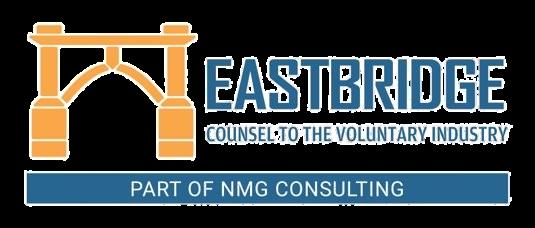

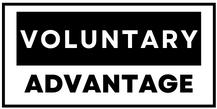

Jennifer Daniel Aflac

Jack Holder EBIS

Paul Hummel

Rachel McCarter Mercer


Editors
Heather Garbers | Trevor Garbers
For Media and Marketing Requests Contact:
Heather@voluntary-advantage com
Trevor@voluntary-advantage com
Mailing Address
10940 S Parker Rd #257 Parker, Colorado 80134
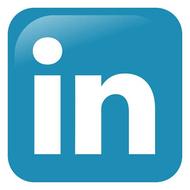
Steve Clabaugh CLU, ChFC
Mark Rosenthal PwC
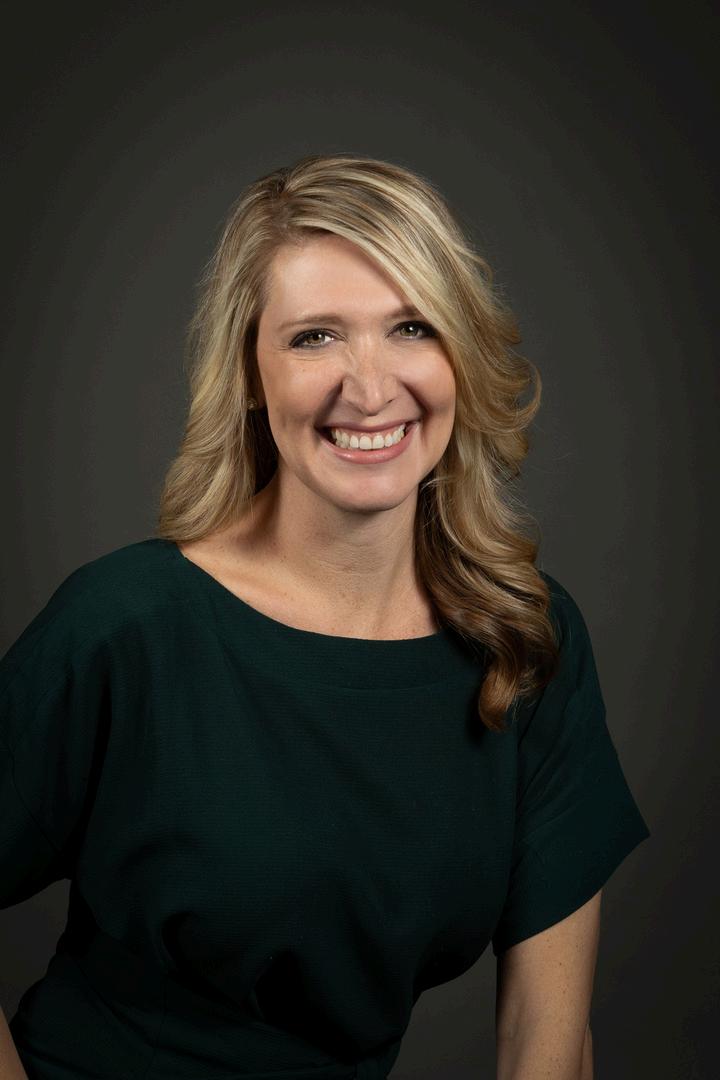
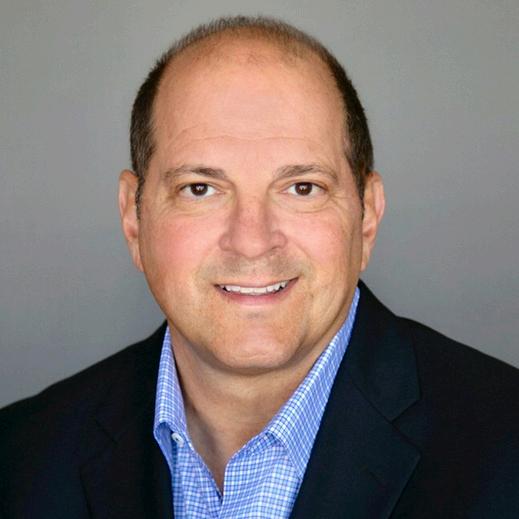
Seif Saghri Founder
Tim Schnoor Birch Benefits
Sydney Consulting Group A d v i s o r y B o a r d


Hunter Sexton, JD, MHA

NewSolutionsChangingtheMarketplace
InnovationinSupplementalBenefits:AStrategicApproach forCarriers
AShiftinEmployeeFinancialPriorities:WhatItMeansfor OpenEnrollment
HowtoNotBecomeaRogueGhost... OrSelf-CorrectIfYouHave
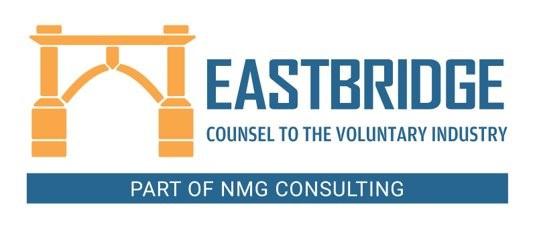
5BrokerInsightsIntoClaims Integration&TechPlatforms

TheBenefitStackisEvolving: HowTech-ForwardAdmin PlatformsAreWinningBroker Business
The chicken or the egg “causality dilemma” is commonly questioned as – which came first. It’s metaphoric adjective outlines situations where it is not clear which of the two events should be considered the cause and which should be considered the effect
Today, I believe the same is occurring at a rapid pace between the term “relationship” and “trusted transaction” So, which occurs first, or do they occur simultaneously or, is one a direct result of the other? More importantly, which side are you on and can you make a case for it?
When I first entered this marketplace, I was all in that the “relationship” is everything and with it no wall is too high to climb, and every challenge can be resolved through the relationship you’ve built over time And, as a result, you could never obtain a trusted transaction without the relationship you built via face-toface meetings, golf outings, cocktails, steak-dinners and mass LinkedIn connections

Surprisingly, I’m going to put a stake in the ground and implode all prior thought processes regarding the importance of relationships In my humble opinion, relationships are quickly becoming incredibly fragile and, in some cases, becoming a thing of the past Now, before you drop me from all forms of social media and tell me I’m crazy, please allow me to explain what were seeing today; First, do we have a relationship with Amazon or, a trusted transaction? Yes, the later Do we have a relationship with Airbnb, airline, hotel, etc or, a trusted transaction? Did they call you first, take you to dinner and buy you drinks to first win your business? Nope, they executed a trusted transaction through a booked room, executed a clean bill and built loyalty from there
Second, we now have carriers who we write business with today that are no longer sending out carrier representatives – that’s right, we place business with carriers with zero on-going carrier contacts, we have 100% AI UW with no human involvement, with no human interaction during open enrollment, and we are seeing 60% + participation results, with 75%-83% claim utilization rates from the placed carrier (not even including wellness on CI & Acc) But our marketplace continues to lead every discussion with, “let’s build a relationship?” No, let’s build a process and system that best supports the needs of the actual policy holder like the rest of society where they are selling billions through capital markets without overrides, marketing subsidies, etc. Is Amazon giving us an override on each purchase – no, yet we continue to buy billions, because it’s a trusted transaction right at our fingertips.
Today, our marketplace is now at a point where we need to have trusted transactions from the front-end of the sale through claim. We have an overabundance of data just awaiting our direction, which will guide us to stronger customization at the employee level, all while driving better outcomes for the attached medical and Rx plan in place. Our next generation of buyers is already telling us that they demand more from a product development perspective through execution of claim My only question is which industry leaders will be leading the great trusted transaction revolution The time is now!

By Eastbridge Consulting Group
It’s no secret voluntary/worksite carriers, brokers and employers are leaning harder than ever on technology to make employee benefits programs run faster, easier and more accurately The growing trend toward online self-enrollments, expectations for online services, and increasing use of APIs and artificial intelligence generate a lot of the buzz. But there are other critical ways voluntary carriers are focusing on technology to add greater value to their offerings, especially for claims and enrollment platforms.
Most brokers are on board with the importance of claims integration capabilities
A strong majority (87%) of those surveyed for Eastbridge’s new “Broker Perspectives on the Voluntary/Worksite Market” Spotlight™ report say they have a solid understanding of how claims integration is supposed to work, up significantly from 73% last year. This capability isn’t necessarily a deal-breaker for brokers when it comes to choosing a voluntary carrier in fact, it barely registers on a list of their top selection criteria, ranking far below administration and service, product features and benefits, and claims management. But more than half (56%) still consider claims integration capabilities very or extremely important, and nearly as many (47%) say this capability is very or extremely important for medical claims

Most brokers surveyed (82%) also agree that medical claims integration is a way for carriers to differentiate themselves But interestingly, fewer than half say the employers they work with expect carriers to support claims integration And apparently there’s plenty of room for improvement in this capability: Most brokers (74%) say few carriers offer claims integration across all products and services.
Nearly half (49%) of brokers prefer carriers offering claim integration services to automatically open claims for appropriate voluntary/worksite products, and another 27% would like carriers to pay these claims automatically Just 19% say carriers should only notify employees when they could consider filing claims for their voluntary coverage
Brokers express strong interest in knowing how their clients’ employees are taking advantage of their voluntary benefits: More than two-thirds say it’s very or extremely important for carriers to provide claims utilization reporting But it’s not always easy much less automatic for brokers to get this insight About half of brokers say carriers will share claims utilization reports upon request, and another 28% say carriers provide reports annually or at renewal. However, 13% say carriers are not able or willing to provide these reports.
Nearlyhalf(49%)ofbrokersprefer carriersofferingclaimintegration servicestoautomaticallyopenclaims forappropriatevoluntary/worksite products,andanother27%wouldlike carrierstopaytheseclaims automatically.
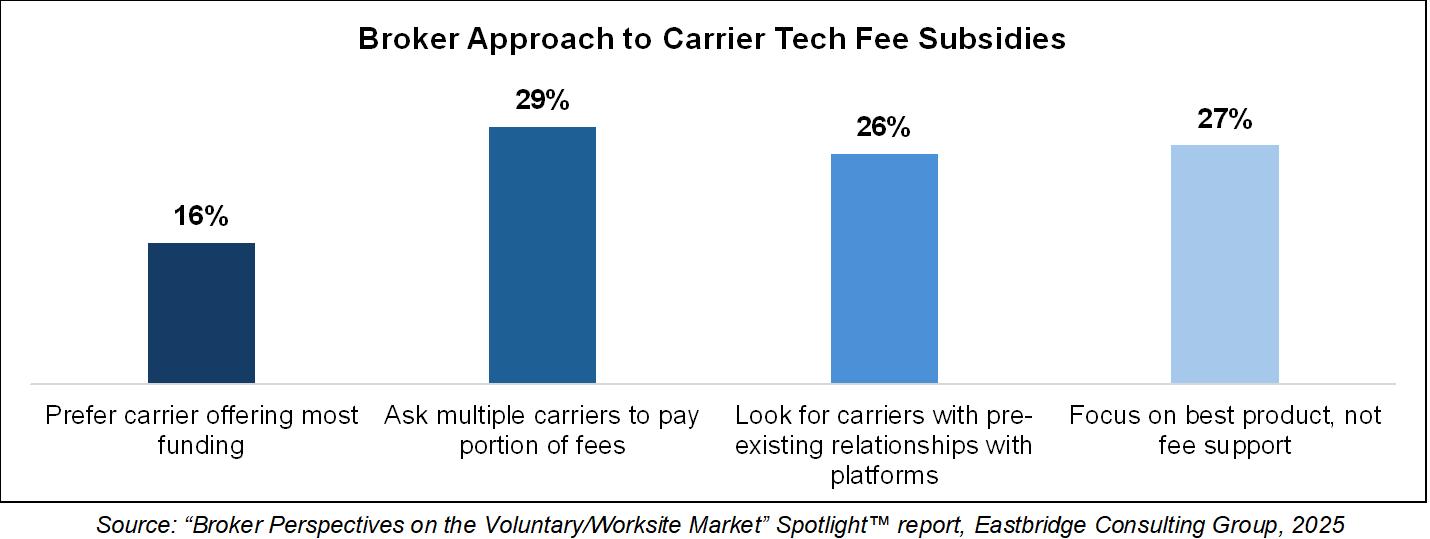
Brokers tend to prioritize products already built on their preferred technology platforms when selecting carriers. More than a third (35%) say it’s very important and with all other factors equal, they select carriers with pre-built products; while nearly as many (32%) say it’s extremely important and they specifically look for carriers with products already built on the platform. Only about a quarter of brokers (28%) say this is a nice-to-have but doesn’t affect carrier selection, and just 6% say it’s not important
Brokers appear to have mixed opinions on the best approach to funding for technology platforms. Those surveyed are fairly evenly divided between asking multiple carriers to pay a portion of the fees, looking for carriers with pre-existing arrangements with their preferred benadmin platforms, and focusing on the best products rather than fee support (although they say it’s great if that carrier also offers to chip in) Just 16% give preference to the carrier that offers the most fee support, and only 5% mention it as a primary reason for switching carriers
The “Broker Perspectives on the Voluntary/Worksite Market” Spotlight™ report uses responses from dual surveys of more than 200 voluntary-focused brokers to provide data on sales, products, carrier selection, communication and enrollment, technology platforms and other aspects of their business Contact Eastbridge at (860) 676-9633 or email info@eastbridgecom for information about how to purchase a copy of this report

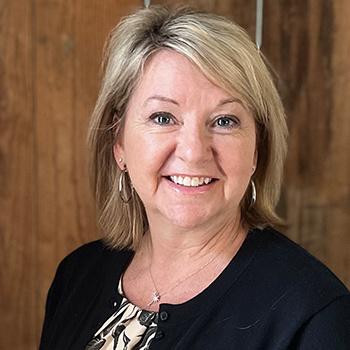
Nick Rockwell Senior Advisor Danielle Lehman Senior Consultant
Eastbridge is the source for research, experience, and advice for companies competing in the voluntary space and for those wishing to enter. For over 25 years, they have built the industry’s leading data warehouse and industry-specific consulting practice Today, 20 of the 25 largest voluntary/worksite carriers are both consulting and research clients of Eastbridge
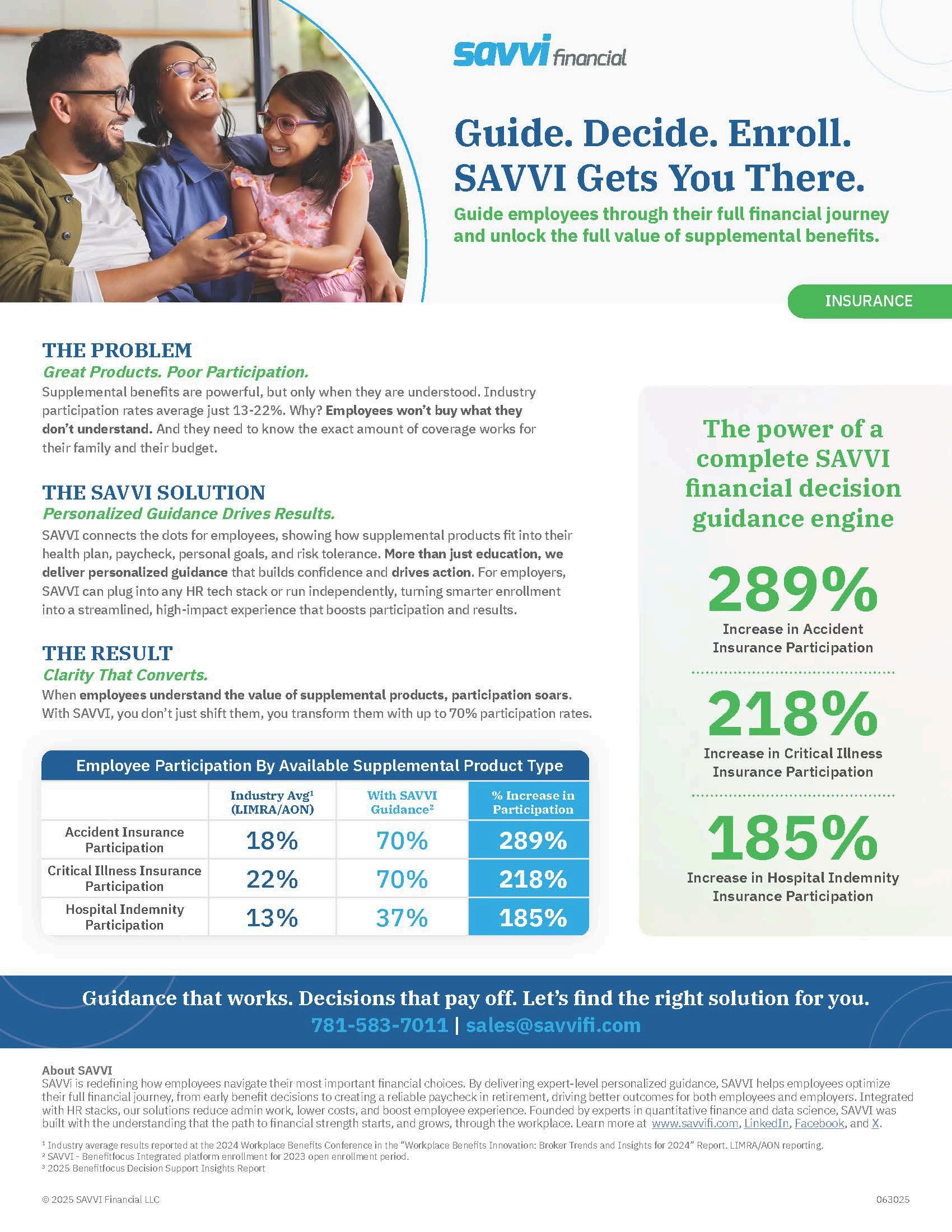

By PES Benefits
For years, many brokers have had to work around clunky legacy ben-admin systems with rigid interfaces, sluggish support, and limited flexibility But in 2025, that script is flipping A wave of new vendors equipped with modern architecture, real-time data capabilities, and seamless mobile experiences are making a splash in the benefits administration space And brokers are taking notice.
Post-pandemic workforce changes, the surge in remote work, and increasing benefit complexity have accelerated demand for smarter, more intuitive administration tools.
Employers want platforms that feel less like databases and more like employee engagement tools and brokers want solutions that reduce their workload, not add to it
According to the 2024 Assurex Global Employee Benefits Market Trend Report, employers and brokers are shifting sharply toward online solutions that enhance usability and reduce administrative errors (Assurex Global, 2024). That’s helping fuel the rise of next-generation platforms that prioritize employee experience, automation, and data accuracy exactly what the modern workforce expects.
Modern benefit administration vendors are no longer just enrollment engines. The most successful new entrants offer:
Custom branding and white-label options to help brokers and employers maintain consistency and credibility
Mobile-first UX that feels familiar to employees used to apps like Uber or Venmo
Real-time eligibility updates and EDI feeds that prevent enrollment delays and coverage issues
Integrated communication tools including push notifications, chatbots, and SMS to drive better benefit utilization
Live support models that blend tech with real humans, helping employees and HR teams alike
The right platform doesn’t just make life easier for employees it can significantly streamline broker workflows, too. Think automated reporting, faster issue resolution, API-driven data exports, and cleaner implementation timelines.
Brokers should look for systems built by teams that actually understand the employer–broker dynamic and offer dedicated back-end access or broker dashboards
New vendors that build with brokers in mind will gain long-term loyalty and referrals
When evaluating new ben-admin platforms, here are five questions brokers should always ask:
1 Is it built to evolve? Can it grow with my client’s changing benefit needs?
2 Does it offer broker-specific tools and visibility?
3 How seamless is the employee experience?
4 Can it integrate easily with carriers and payroll systems?
5 What does implementation and ongoing support actually look like?
As the market becomes more saturated, the vendors that survive won’t just be the newest or flashiest they’ll be the ones that make brokers look good and make employers’ lives easier. That’s why now is the time for brokers to rethink their technology partners and recommend solutions that bring true value across the stack.
In 2025, benefit brokers aren’t just selling products they’re selling platforms. And those platforms are rapidly becoming a key differentiator in winning and keeping business

PES Benefits is dedicated to revolutionizing the employee benefits landscape with cutting-edge technology, administration, education, and virtual care solutions. Since its inception, PES Benefits has focused on simplifying the benefits experience, making it more accessible and meaningful for all involved.

By Heather & Trevor Garbers
The way we think about employee benefits is changing fast and leading innovators are stepping up to meet the moment with bold solutions that close critical gaps, modernize outdated processes, and deliver tangible peace of mind for today’s diverse workforce From groundbreaking disaster insurance and home protection to AIpowered engagement tools and ondemand digital platforms, these companies are tackling long-standing problems with fresh approaches that elevate the broker’s role, empower employers, and make benefits more accessible, understandable, and impactful.
Together, these companies prove that meaningful innovation isn’t just about new products it’s about rethinking how protection, education, and access work in the real world They’re showing us that a more resilient, flexible, and peoplecentered benefits marketplace is not only possible, it’s already here
Let’s look into some of the new solutions out there!
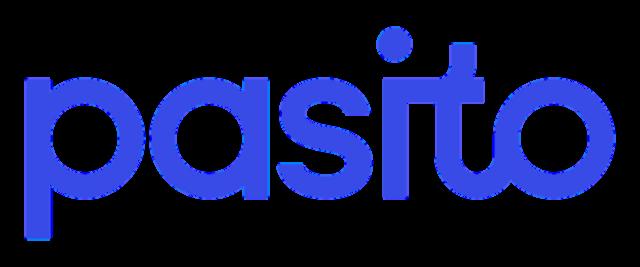
Pasito is an AI-powered platform that helps brokers, carriers and organizations modernize benefits engagement, improve voluntary benefit participation, and increase claims utilization Pasito’s AI agents, customized for insurance and benefits, build personalized communications, recommendations, microsites, benefits guides and other materials
Brokers and carriers are increasingly expected to offer value-added services to stand out in a crowded marketplace Pasito makes it easy to deliver a high-quality communications & engagement experience without adding strain on internal teams
With data connectivity, personalized communications and AI agents built for purpose, we help enable brokers and carriers to elevate the employer and employee experience and drive more meaningful employee engagement that results in higher participation and more claims filed.
Pasito equips brokers and carriers with a powerful edge: AI-driven tools that simplify the complex and personalize the employee experience at scale In a market where voluntary benefits are often commoditized, we help you stand apart by transforming how benefits are communicated, understood, and used
With Pasito, your teams can:
Launch mobile-friendly, branded microsites in days not weeks
Automate personalized benefits education and decision support using AI trained specifically on insurance and VB data
Integrate medical spend data to proactively drive higher claims utilization
Demonstrate tangible ROI with real-time engagement and participation analytics
Our platform not only drives higher participation and utilization it positions you as a strategic partner delivering smarter, more modern benefits experiences without increasing internal lift
75% reduction in manual content creation time
3x increase in employee engagement with benefits content
37% lift in VB participation
John Locy, Executive Vice President, Head of Partnerships, Pasito
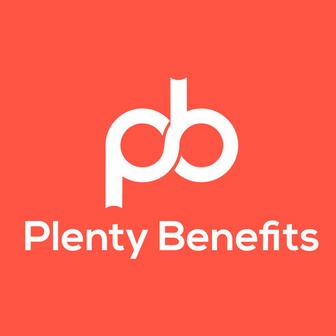
Plenty Benefits is an automated voluntary benefits marketplace that eliminates spreadsheet headaches by providing realtime quotes, instant enrollment, and immediate payment processing through a customizable platform tailored to each broker and client Our defined contribution model gives workers more choice at lower employer costs while freeing up 70% of administrators’ time to refocus on engaging and consulting, instead of manual processes This solution is especially well equipped for down-market employers as well as those with modern work arrangements (1099 workers, part-timers, etc)
Our goal is to enable benefit parity. We believe that each individual, regardless of employer size or status, should have access to the expanding benefit suite enjoyed by today’s top companies. We see the defined contribution model as a method of supplementing & strengthening our group chassis with additional options to expand our industry and improve worker wellbeing

The workforce is changing, healthcare costs are rising, and the benefit disparity is growing Our solution brings both traditional products (dental, vision, life, disability, supp health) & modern solutions (mental health, financial wellness, caregiving support, etc) to workers of all types in a simple, cost-effective, practical, and personalized way
David Lanphear, CEO/Founder, Plenty Benefits

Brite is a digital benefits communication platform built specifically for brokers and their teams Our platform enables brokers to create and launch mobile-friendly, branded benefits guides in hours not weeks without relying on designers or third-party vendors These guides are shared via email, text, Slack, QR code, and more, and they include built-in decision support tools, real-time analytics, and bilingual content We serve benefit brokers, enrollment firms, and HR teams who support mid-market to large employers, particularly those looking to modernize how benefits are communicated, understood, and acted on.
Too much of the industry still relies on static PDFs, dense slide decks, and outdated portals that don’t reflect the way people consume information today. We want to help brokers and their clients move from reactive support to proactive engagement Our goal is to make benefits education a strategic advantage, not a compliance obligation
If we can make employee decisions faster, clearer, and more confident, we reduce noise for HR teams and elevate the broker’s role in the process
Brite solves three core problems: communication fatigue, decision paralysis, and operational inefficiency We simplify the way benefits are presented turning jargon-heavy materials into interactive, visual content that employees actually engage with. For brokers, we offer a scalable system to deliver consistent, highquality experiences across hundreds of groups. That consistency, paired with realtime data and customizable branding, helps brokers stand out in competitive pitches, streamline renewals, and drive stronger client relationships
We’re seeing meaningful impact across the board
Clients have reported 30% increases in plan utilization, 60% higher participation rates, and significant reductions in employee confusion and inbound questions
Brokers are saving 10+ hours per client during open enrollment and using Brite to win new business by showing something their competitors can’t We’ve supported thousands of employers through our broker partnerships and continue to grow nationally
Landon Fielding, CEO & Founder, Brite

Recoop Disaster Insurance was designed to help with expenses from a disaster that homeowners and renters' insurance doesn’t cover, protecting people against material out of pocket costs like high deductibles or cost sharing for roof damage.
Recoop quickly pays lump-sum recovery cash (up to $25,000) after a disaster bridging the gap between traditional homeowners’ insurance and the immediate costs of recovery Available to homeowners and renters across 47 states and Washington DC, today
We designed Recoop to cover the things most Americans don’t realize aren’t covered by their homeowners or renters’ insurance, protecting people’s biggest exposures with affordable policies and rapid cash without any loopholes or gotchas Unlike typical home and renters’ insurance policies, Recoop covers multiple natural disasters ranging from earthquakes, hurricanes (with storm surge), tornadoes and wildfires to gas explosions, dust storms and winter storms.
Another common gap is the depreciating value of certain parts of the home, think the roof or windows, where the cash value the homeowner receives from the insurance company may only be a fraction of the cost to replace them
In addition, deductibles can be extremely high for disasters, especially for wind-related damages from tornadoes and hurricanes in high-risk areas These disaster deductibles can cost anywhere between 5 – 30% of a home’s value Because policies are based on a home’s market value, not its replacement value, which considers the rising cost of materials and the increased demand and cost for labor and supplies, most homes also are underinsured This goes for guaranteed replacement policies too, which are often capped based on the home’s insured value. Plus, with typical home insurance, customers could be stuck waiting up to 30 days before they get paid after submitting a claim.
Recoop recovery cash arrives within an estimated 24-48 hours after claim approval, versus typical insurance which can take 30 days or more to process and pay policy holders

Armadillo is a unique, voluntary benefit that takes care of employees’ most valuable asset - our homes Home breakdowns are common, increasingly expensive, and never planned, which makes them a productivity and wallet killer. Armadillo exists to take the pain associated with breakdowns of systems and appliances off of employees’ hands, so they can get back to doing what they do best.
We want to alleviate the financial pain of a costly breakdown and drive productivity gains, as the average home breakdown takes 11 days to repair or replace. Thus far, we average well over one claim per employee per 12 month period - so utilization is quite high
We are not like traditional home warranties We are a tech-driven home protection plan (takes ~2 mins to submit a claim) complemented by a US-based support team Plus, we let employees schedule with one of our vetted technicians or they can use their own trusted pro and we’ll reimburse them
In an era defined by rapid change, growing risks, and evolving workforce expectations, these trailblazing solutions highlight a clear truth: the benefits marketplace is no longer about offering one-size-fits-all products or relying on outdated processes. Instead, it’s about meeting people where they are, anticipating what they need, and delivering meaningful value when it matters most
Whether it’s bridging financial gaps after disaster strikes, empowering brokers with modern engagement tools, personalizing benefits with AI, protecting the places we live and work, or expanding access to voluntary benefits for all workers these innovators are setting a new standard for what benefits can and should be
As employers, brokers, and carriers look ahead, the opportunity is clear: embrace these solutions not as add-ons but as catalysts for a smarter, more resilient, and more human-centered benefits ecosystem. The future of benefits is here and it’s brighter, bolder, and built to truly support people through every chapter of life.
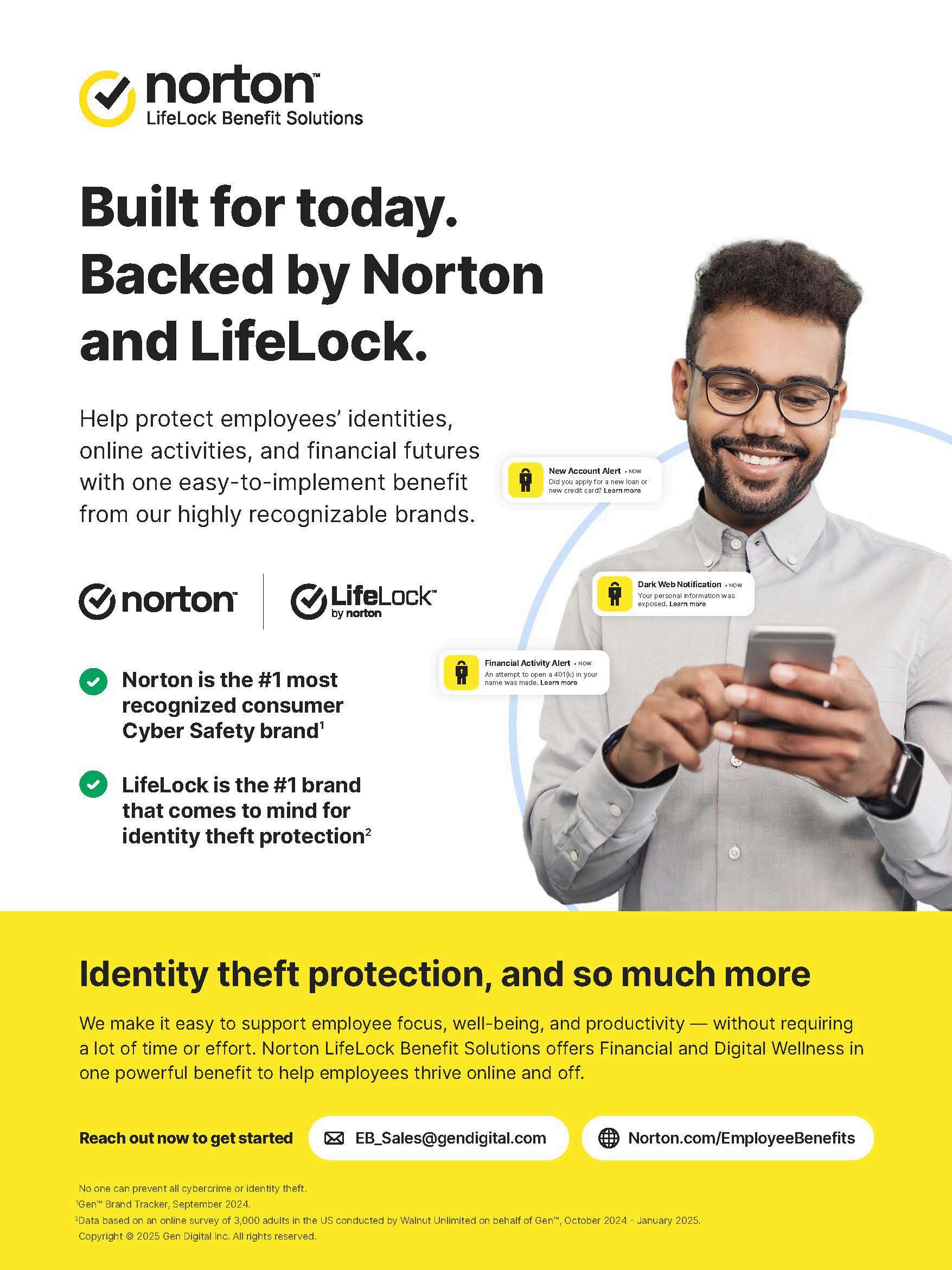

By Ashlee Borcan, Jen Howard and Taylor McKinnon
The supplemental benefits space is fiercely competitive, with carriers striving to innovate in various ways to grow new business while maintaining current clients The competition is particularly aggressive in the employee benefits sector where products are often offered on a flexible and adaptable group chassis Traditionally, carriers have focused on the competitiveness of the benefits package and premium rates – offering a little more benefit at a slightly lower cost than market norm at the time of development While benefits and premiums are important, the scope of innovation is broadening.
Product innovation within the confines of benefits and premiums faces unprecedented competitive and regulatory challenges, compelling carriers to explore other avenues for innovation. Increasingly, carriers are focusing on customer experience and technology. Customers seek reasonably priced products with quick and easy claims adjudication, a desire shared by carriers, who also aim to minimize claim denials and the expense burden of paying claims
Customer service improvement is increasingly a primary goal across other consumer industries, and there is pressure for insurers to improve or business will go elsewhere Decisions made by carriers now will shape the future of supplemental benefits, and it is critical for carriers to make the best decisions in order to succeed.
In recent years, carriers have been proactive in addressing previously unmet or underserved customer needs in the supplemental benefits space. This includes the addition of mental health benefits in many supplemental health products, broader coverage for all forms of critical illness (CI), and the reduction or elimination of common policy exclusions
Additionally, carriers are experimenting with fundamentally different supplemental health products that offer similar financial protections through alternative product designs
The inclusion of mental health benefits has been a significant step forward Traditionally, mental health has been an area that was either neglected or inadequately covered by supplemental insurance policies Recognizing the growing awareness and importance of mental health, carriers have started to offer benefits that cover mental health conditions in a variety of ways The introduction of mental health coverage across the suite of supplemental health products not only addresses a critical need but also aligns with broader societal shifts towards mental health awareness.
Broader coverage for critical illnesses is another area where carriers have made strides.
Traditional CI policies often covered only the most well-known forms of diseases (eg, Alzheimer’s Disease is typically covered, but broader dementia is usually excluded), leaving many customers unprotected against less common but equally severe conditions By expanding the scope of coverage, carriers are providing more cohesive protection, which is increasingly valued by consumers.
Eliminating common "gotcha" exclusions has also been a focus. These exclusions often left policyholders feeling deceived and dissatisfied when their claims were denied based on fine print they were unaware of. For example, hospital indemnity policies historically contained exclusions for attempted suicide and self-inflicted injury With the increased emphasis on mental health care in a post-Covid era, many carriers expanded their benefit offerings to include broad coverage for mental health treatment; however, the suicide and selfinflicted injury exclusions remained
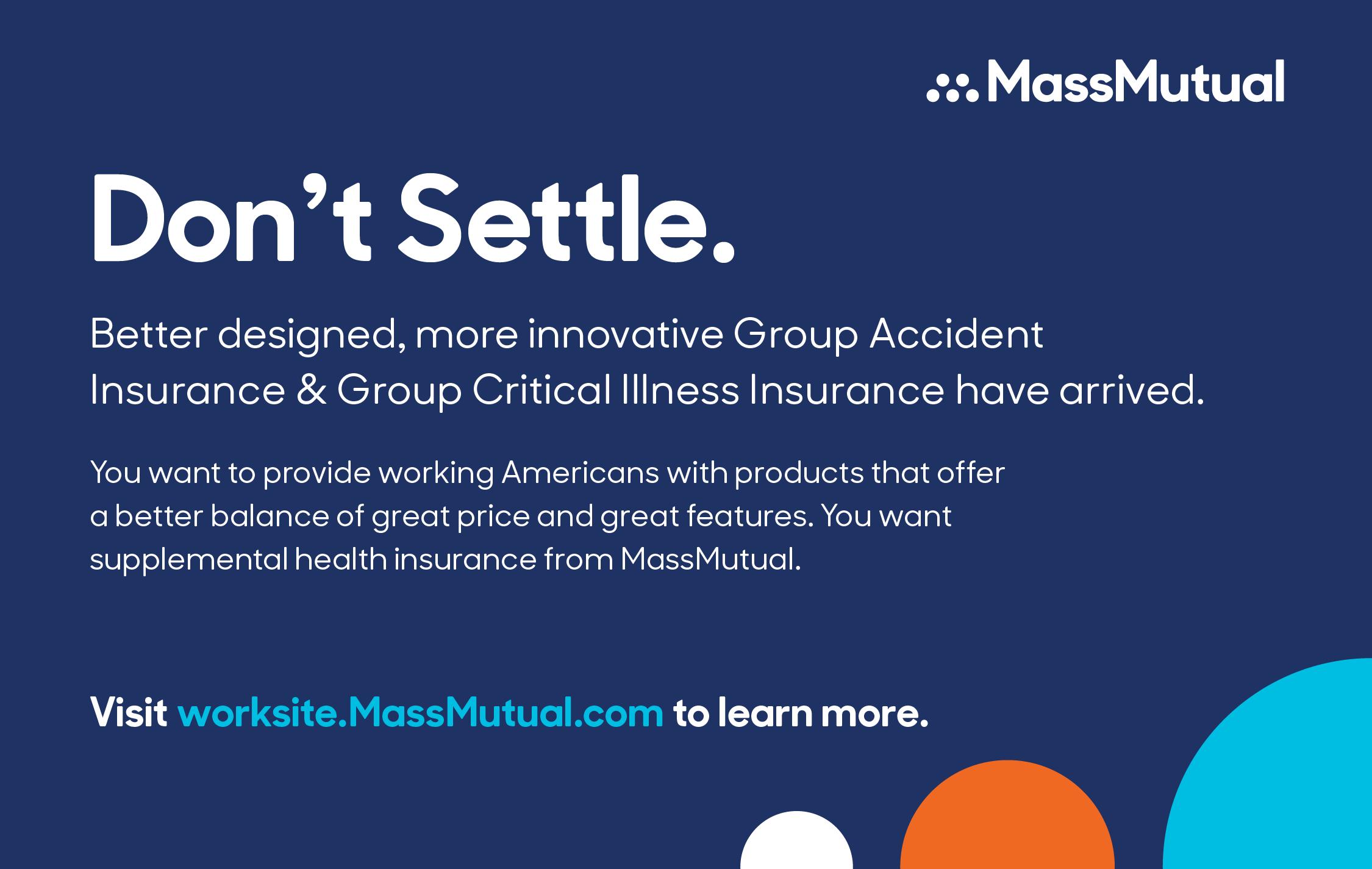
Self-harm is necessarily tied to a mental health condition, yet these exclusions would deny an insured benefits for treatment of selfinflicted injuries By removing or reducing the exclusions, carriers are building trust and improving customer satisfaction
Additionally, over the last several years premiums have generally been dropping due to favorable experience Carriers are therefore able to increase benefits for a constant premium or decrease premiums for a set plan design As a result of this trend, carriers are typically the most competitive immediately following a product development cycle and then lose competitiveness over time as other carriers develop their own new products.
Fortunately, the market has not stopped at just premium and benefit updates. Carriers are also enhancing various technology-reliant enrollment processes. Stakeholders, including carriers, customers, HR partners, enrollment firms, and employer groups, seek userfriendly technology solutions Carriers aim to clearly communicate the value of their specific products and convince consumers that the product will pay at their time of need
Given the challenge of securing face-to-face time during enrollment, many carriers are leveraging technology and decision-support tools to help customers prioritize coverage Unfortunately, as supplemental benefits often take a back seat to other employee benefits, it’s challenging for consumers to really engage and understand the coverages they are, or are not, electing to purchase without help during the enrollment process.
Efforts to simplify the claims process are also underway. Carriers are exploring various forms of claims auto-adjudication and considering contractual and plan design updates to facilitate better application of auto-adjudication processes.
Jennifer O’Brien HowardPrincipal and Consulting Actuary with the Tampa office of Milliman. She
joined the firm in 2005.
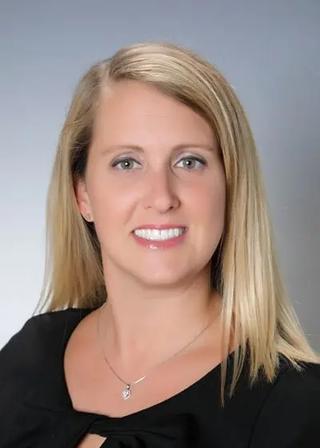
Accessing broader customer data on a timely basis to identify unclaimed benefits remains a challenge, and some benefits are harder to adjudicate than others
For instance, while it is easy to identify a broken leg in a medical record, determining if it is non-payable due to an exclusion is more complex Similarly, identifying cancer in a record is straightforward, but verifying the diagnosis date and eligibility under the CI contract is challenging Ultimately the path of least resistance for claims adjudication may be a radical revisiting of benefits, which may solve one problem, but raise red flags from a regulatory perspective, as well as complicate comparison to peer products in the marketplace.
Auto-adjudication represents a significant advancement in the claims process. The ability to automatically process claims based on pre-set criteria can drastically reduce the time it takes for customers to receive their benefits. However, this requires robust data integration and a thorough understanding of medical records and insurance policy details Carriers must invest in technology that can accurately interpret medical data and align it with policy terms
Additionally, the challenge of accessing broader customer data to identify unclaimed benefits cannot be overstated Often, customers may not be aware that they are eligible for certain benefits, leading to underutilization of their policies Carriers have felt pressure to develop systems that can proactively identify and notify customers about potential claims, ensuring they receive the full value of their coverage.
In the future, carriers should consider several strategic steps:
Simplifying the claims process is paramount
This may involve changing the claims paying process through various forms of automation or AI and/or changing the coverage itself Removing exclusions can make the claims adjudication process easier and more consumer-friendly, creating the potential for a win-win situation Carriers should also consider adopting more transparent and straightforward policy language to reduce confusion and improve customer trust
Education and communication are crucial. Carriers need to analyze denied claims, assess if they are paying too much benefit for too few claims (leaving harmful gaps in coverage), and avoid making products that are overly complex and/or difficult to understand Helping customers understand their purchases is essential, and distribution channels should assist in improving consumer service
Customer education should be an ongoing effort Carriers can use various platforms, such as webinars, interactive tools, and personalized communication, to educate customers about their policies Many are doing so, but it is difficult to get customers to engage meaningfully with this content The easier the product is to understand, the more realistic it is to expect consumers to engage with shorter educational content. Clear and concise information can empower customers to make informed decisions and reduce the likelihood of claim denials.
Technology should aid in enrollment, be flexible and adaptable, and leverage tools like AI and automation for smoother and faster operations These goals will require extensive testing, access to data, and potentially significant changes to standard products
AI and machine learning can play a transformative role in the insurance industry These technologies can analyze vast amounts of data to identify patterns, predict customer needs, and streamline processes For example, AI can be used to develop personalized policy recommendations based on individual customer profiles, enhancing the enrollment experience and value for the consumer
Automation can also improve operational efficiency and doesn’t require the use of AI. Routine tasks, such as data entry and claims processing, can be automated to reduce manual errors and speed up service delivery. This automation not only improves customer satisfaction but also allows carriers to allocate resources to more strategic initiatives.
Taylor McKinnonPrincipal and Compliance Consultant with the Tampa office of Milliman He joined the firm in 2016

Insurance statutes and regulations often hinder innovation and flexibility, as many were established before today’s digital era. Even when regulators support innovative changes, they may be constrained by existing laws. States’ attempts to foster innovation include “regulatory sandboxes” where carriers can pilot new and innovative products with reduced regulatory limitations. While such programs can add value, they have limited use and do not fully solve the problems related to stagnant laws and regulations At the end of a sandbox period, the carrier is still stuck trying to figure out how to expand and grow the product beyond a small pilot program and finds itself back in the world of traditional insurance regulation
Additionally, federal and state governments’ inconsistent views of the value of supplemental health insurance (disparagingly referred to by the BidenHarris Administration as "junk insurance[1]") influences regulatory motivations. While supplemental health products are generally regulated by the states, the interpretation of federal law by federal regulators impacts how states review these products. Shifting federal and state regulators' perspectives to recognize the value of supplemental health products will encourage departments of insurance to support modernization initiatives in product design, administration, and claims processing
While the insurance industry is subject to extensive laws and regulations, as with any form of the law, there is always room for interpretation When those interpretations are influenced by negative views of supplemental insurance, innovation, which is often dependent on creative regulatory interpretations, will be that much harder A department of insurance that does not see value in supplemental health insurance is much less likely to find a way to approve an innovative product that does not cleanly fit within state laws than a regulator that views supplemental health insurance as a valuable option for consumers. Changing the public and regulator perception of supplemental benefit products may, in some respects, have as much impact on the ability to innovate as changing laws
Because regulatory support is crucial for fostering innovation in the supplemental benefits space, carriers should actively engage with regulators to advocate for policies and interpretations that enable flexibility and modernization Collaborative efforts between the insurance industry and regulatory bodies can lead to the development of frameworks that support innovation while ensuring consumer protection.
Collaborative efforts between the insurance industry and regulatory bodies can lead to the development of frameworks that support innovation while ensuring consumer protection. Conversations with regulators should focus as much on the value to consumers and the purpose behind an innovation as they do on the regulatory analysis. A regulator that buys into the idea of innovation may be motivated to interpret the law in a favorable way. Educating policymakers about the benefits of supplemental health products can help shift the perception and drive regulatory changes that facilitate innovation
Ashlee Borcan - Principal and Consulting Actuary with the Tampa office of Milliman. She joined the firm in 2011 and has more than 15 years of consulting experience.

For supplemental carriers to position themselves for a successful future, they must adopt a long-term strategic approach This involves fostering an innovative mindset, utilizing data effectively, and investing in scalable technology that adds value rather than impeding progress. By focusing on these areas, carriers can navigate the competitive landscape and meet evolving consumer expectations.
The future of supplemental benefits lies in the ability of carriers to innovate and adapt. By simplifying the claims process, meeting consumer needs, enhancing technology, and seeking regulatory support, carriers can position themselves as leaders in the industry The journey towards innovation requires a commitment to continuous improvement and a willingness to embrace change With the right strategies in place, carriers can not only meet but exceed customer expectations, ensuring long-term success in the supplemental benefits landscape
[1] https://wwwcmsgov/newsroom/press-releases/biden-harris-administration-protects-consumers-low-quality-coveragelimiting-junk-health-plans

In today’s voluntary benefits landscape, brokers are tasked with more than just spreadsheeting carriers for their employer clients they must also ensure that the carriers they partner with can deliver their products efficiently, flexibly, and reliably For too long, outdated technology has created frustrating obstacles, both for brokers trying to manage plans and for employers and employees using them These challenges, deeply rooted in carrier legacy admin systems, have become almost accepted as the norm But they don’t have to be
Imagine a world where enrolling in benefits is seamless, where systems communicate effortlessly with one another, and where updates and changes don’t cause major disruptions
This isn’t just a dream it’s possible with the right technology. Some carriers are already making this a reality, and brokers who understand and insist on these technologies will be better equipped to serve their clients and solve the industry’s most persistent problems.
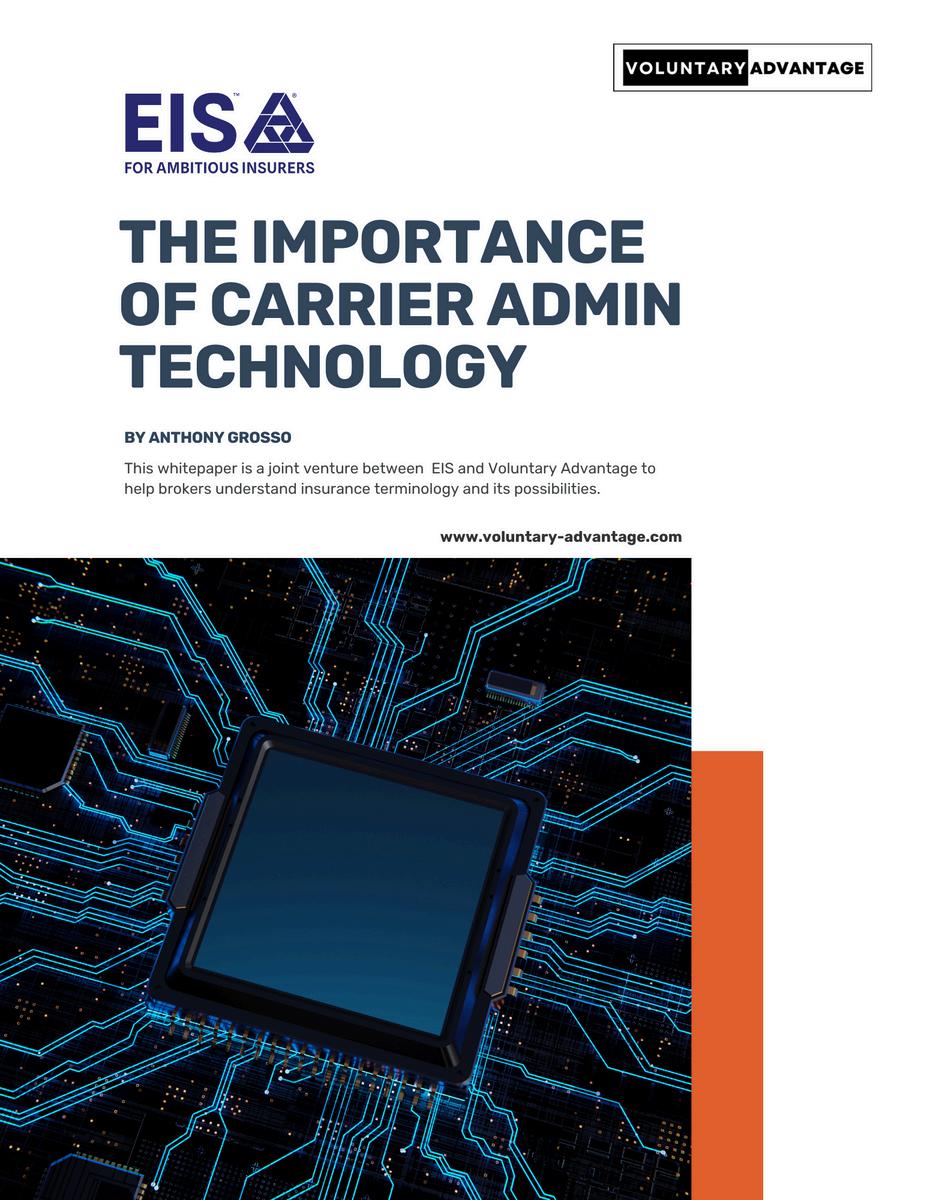


Anthony “Tony” Grosso Head of Growth / GWB Insurance Markets
Tony has over 25 years of hands-on experience leading innovation, business development, product and marketing across all sectors of the insurance industry Tony is leading the GWB market for EIS, a high growth company, helping Voluntary Benefits insurers to achieve their ambitious plans and incredible potential

Let’s face it: we all know legacy systems are holding insurers back
This is why it’s our mission as a coretech supplier for insurers to stop that problem in its tracks. Our cloud-native SaaS platform is built to catapult insurers past old, legacy limitations, and to truly future-proof their technology ecosystem so their business model, product offers, and ways of serving their customers are never held back again, so they can have the truly agile operations of a tech company, rather than a legacy company stuck in decades past Learn more at www eisgroup com

By Phyllis Falotico
Heads up! This year's open enrollment season won't be business as usual.
After years of tracking employee financial behavior and voluntary benefits trends through our research, it’s no stretch to say we’re witnessing a fundamental shift in how working Americans view their financial futures. MassMutual’s Q1 2025 Pathway to Voluntary Benefits Success report reveals a clear message: Employees are no longer focused on getting ahead. They're focused on staying afloat.
This transition from growth to maintenance is reshaping how employees think about voluntary benefits – and creating new strategic opportunities for employers, brokers, and carriers alike
We Are Here: Understanding the Market Shift
MassMutual’s Workforce Financial Stability Score (WFSS) measures working Americans’ perceptions of financial well-being While the Q1 2025 average of 560 was on par with last year, the story beneath the surface is one of growing caution
Here's what stands out:
More employees are prioritizing financial maintenance over improvement
Fewer are expecting to start or build an emergency fund
More are concerned about the ability to save for the future before retirement
Cost is now the top concern when evaluating voluntary benefits
The notable shift toward shorter-term financial thinking signals a transformation in how working Americans view their financial futures And it’s a shift that’s occurring across all three employee segments* tracked by our WFSS survey –Financially Challenged, Stable, and Healthy
So, what does the shift mean for voluntary benefits? Our research uncovers a paradox
On the one hand, the data lays out a growing need for more accessible benefit solutions In today’s economic climate, voluntary benefits are no longer “nice-tohaves” They can be the essential tools employees may need to build financial resilience – and the solutions that help employers bolster their benefits program without adding to the budget.
Yet, at a time when employees most need financial protection, voluntary benefits engagement is declining. The numbers offer a reality check for our industry – and a powerful opportunity to adapt how we design and deliver solutions to meet current needs
Enrollment is dropping. Forty-four percent of employees didn't enroll in voluntary benefits during their last open enrollment, compared to 38% the prior year Perhaps more troubling, 35% now regret their benefit choices, and 28% wish they had chosen differently
Knowledge gaps persist. Employee understanding of Group Accident Insurance, Group Critical Illness Insurance, and Group Hospital Indemnity Insurance remains remarkably low. In fact, the overall knowledge levels around Supplemental Health benefits haven’t increased since our tracking began in 2022. Today, only 30% of employees understand Critical Illness Insurance and 27% understand Hospital Indemnity Insurance.

44%ofemployeesdidn'tenrollin voluntarybenefitsduringtheirlastopen enrollment,comparedto38%theprior year.
Cost sensitivity has intensified. Twentynine percent of working Americans now consider affordable pricing the most valuable aspect of voluntary benefits, up from 22% in 2023 Meanwhile, 35% report dropping their voluntary benefits due to cost. The cost-focused decision-making creates a unique challenge in a world where employees are increasingly concerned about how they’ll handle financial emergencies.
While these shifts present challenges, there’s also a real opportunity to flip the script. When employees are financially vulnerable and prioritizing predictability, voluntary products offering guaranteed outcomes and accessible protection can matter more than ever
Two solutions may be particularly wellsuited to meet the moment for employees
Group Whole Life Insurance can be a longterm financial anchor to help maintenanceminded employees protect what they’ve worked hard to build The product’s guaranteed death benefits, guaranteed level premiums, and guaranteed cash value provide exactly the kind of predictable protection employees may want right now. Plus, the cash value accumulation can help with emergency preparedness, providing a financial resource** during an employee’s lifetime.
Supplemental Health products, like Group Accident Insurance, Group Critical Illness Insurance, and Group Hospital Indemnity Insurance, can directly address what's keeping employees up at night –unexpected expense vulnerabilities
With employees across all financial segments reporting increased concern about managing expenses between paychecks, these products aren’t just insurance. They can be lifelines to help prevent a single event from derailing a family’s carefully maintained financial stability.
Recognizing the voluntary benefits opportunity is one thing. Turning it into increased employee understanding, enrollment, and financial well-being is another. The good news? Sixty-eight percent of employees are willing to invest more time improving their financial literacy creating a clear opening for employers, brokers, and carriers to shift the momentum and the market
1. Emphasize access.
Many working Americans rely on their workplace benefits as the foundation for their financial health Offering a range of voluntary products can help employees access solutions that match their current priorities and protection needs
2. Reframe the value.
Yes, the research shows that the cost of voluntary benefits is a deciding enrollment factor for employees. Keeping affordability top of mind, highlight how premiums today can help prevent major financial setbacks tomorrow. Position voluntary benefits as valuable safeguards for the financial stability employees are working to maintain
3. Educate and empower – year-round. Working together, we can close the knowledge gap around voluntary benefits Simplify messages to deliver clear, jargonfree information on how the products work – and why they matter Use a range of channels to reach diverse employees, including webinars, digital tools, and real-life examples that go beyond coverage feature lists and technical explanations
Most importantly, don’t limit educational efforts to enrollment season Forty-three percent of employees enrolled in voluntary benefits told us they haven't thought about their benefits since enrolling Benefits checkins, financial wellness touchpoints, and financial education programs throughout the year can boost employee understanding, use, and appreciation
Enrollment is the moment of truth Make the process as simple as possible, balancing technology, decision-making tools, and human support to put the information employees need at their fingertips. Accessible, engaging, and streamlined enrollment experiences can make it easy for employees to act and feel confident about their choices.

Forty-threepercentofemployees enrolledinvoluntarybenefitstoldus theyhaven'tthoughtabouttheir benefitssinceenrolling.
From insights and planning to enrollment support and communication tools, carriers offer a wealth of resources. Tap into the expertise to help build employee engagement, enrollment, and trusted, longterm relationships.
The data is clear: this enrollment season marks a pivotal moment for voluntary benefits As working Americans continue to recalibrate their financial priorities, rethinking enrollment and education is an essential strategic adjustment to show employees how voluntary benefits can align with their current needs and strengthen their financial well-being
Phyllis Falotico, Head of Worksite Marketing, MassMutual - Phyllis is a transformational marketing leader with a deep-rooted passion for the employee benefits industry. Throughout her career, she has championed the belief that financial well-being for working Americans begins in the workplace and has consistently turned that belief into action As the force behind MassMutual’s Workforce Financial Stability Score and survey, she brings data-driven insight and strategic vision to an industry that plays a critical role in people’s lives and future
*Working Americans are segmented into three cohorts based on the WFSS, using a scale from 0 to 100 to indicate the overall sentiments of financial well-being: Financially Challenged - survey respondents who scored between 0 and 39, Financially Stablesurvey respondents who scored between 40 and 69, and Financially Healthy – survey respondents who scored between 70 and 100
** Access to cash values through borrowing or partial surrenders will reduce the certificate’s cash value and death benefit, increase the chance the certificate will lapse, and may result in a tax liability if the certificate terminates before the death of the insured
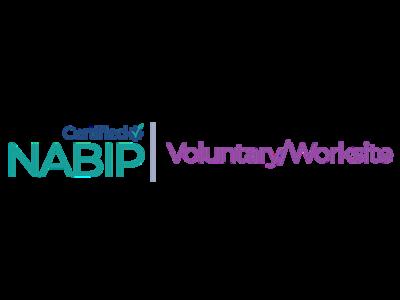

VoluntaryAdvantagehaspartneredwithNABIPtoupdatetheirVoluntary/WorksiteCertificationand itisliveandavailabletoyou24/7virtually.
ThecostoftheVoluntary/WorksiteCertificationcourseis$304.70forNABIPmembersand$401.50fornonmembers,whichincludesonlineinstructioninthreeone-hourwebinarmodules,afinalexamand continuingeducationcredits.Uponcompletion,youwillreceiveacertificateofcompletionas voluntary/worksitecertified.
CourseHighlights:
Mastertheproductwithinnovativesolutions
Understandcontractdifferences
Reviewimplementationandadministration
Obtaincrucialcomplianceinsights


By Steve Clabaugh, CLU, ChFC
Relationalleadersdemonstratethattheycarefortheirteammembersasmuchasthe organization.Asaresult,theycreate,buildandleadhigh-performanceteamsthat consistentlyachieveexcellence.
“Rogue Ghost” is the name used by the Air Force to describe fighter pilots who become so focused on their mission, during practice battle exercises, that they fail to drop out of the battle and land their aircraft as ordered when they have been hit by an electronic weapon
The business application of becoming a Rogue Ghost happens when we, as leaders, become so focused on a specific aspect of our work that we neglect other important responsibilities or people It can, and probably does, happen to all of us at times –especially when we have a major project or event ahead of us.
That neglect, if carried on too long, can have a negative impact on relationships and the overall success of the organization
As a kid, I always enjoyed seeing the Wile E Coyote and Roadrunner cartoons at the movies Wile was so focused on catching Roadrunner that he wouldn’t see the impending disaster about to overcome him He ordered all kinds of special contraptions from the Acme Company that would enable him to run over, smash or blow up the speedy bird Every time, however, he would become so focused on his mission that he didn’t see some catastrophic event that was about to happen and spoil his plan.
Usually resulting in him being the one who was run over, smashed or blown up
While the Coyote and Roadrunner cartoons are intended to be funny Becoming a Rogue Ghost in a business organization is no laughing matter
Last month, I shared a personal story about my extreme focus on preparing and conducting one of our annual incentive trips I spent so much time and attention trying to make sure our guests had a meaningful and enjoyable time that I neglected the person I love most in the whole world – my wife Gretchen. At one point, she felt so lonely that it brought her to tears. This is not something anyone would wish on their spouse.
During our post-trip debriefing, I learned that many of the spouses of our officers and those of our guests often felt neglected and left out of events that focused only on honoring our qualifiers Together we determined that by the next year’s trip we would find a better way to recognize and honor all of our attendees, including our own spouses
We were blessed to work with Gay Grizzell as our Event Planner Gay is one of the best in that business and I’m always happy to refer her company, Executive Meeting Planners LLC, to folks who want to make sure their event is the very best it can be We shared with her our thoughts and concerns and asked her for some guidance on how to improve our incentive trips going forward What she came up with turned out to become a highlight of our trips from then on.
First, she proposed offering an alternative program for spouses or guests of our qualifiers while they were attending our business meetings. These activities started out as unique opportunities to learn about local culture and cuisine with the opportunity to make and enjoy the fruits of their lessons But the one I still hear about from time to time, was an opportunity to do something together to help others
Gay learned about a charity that builds bicycles for underprivileged children She made arrangements for our guests to work together in teams, under the guidance of a knowledgeable bike mechanic, to assemble several bikes They enjoyed the experience, bonded together as friends working together and loved having the opportunity to do something meaningful for the children
I was able to slip away from the business meeting for a few moments to share my thanks for their generosity and kindness Instead, I heard from them that they had never been to an incentive trip where they got to do something so much fun and had such a sense of purpose.
Even though this was a great improvement in the program itself, it still didn’t account for all the time and attention away from our spouses as we planned and executed the incentive trip activities. Frankly, there wasn’t much we could do to change the work that had to be done So, we acknowledged the situation and offered each couple the opportunity to stay for an extra day at the resort facility, at company expense, to be together and enjoy the amenities without any meetings or work activities
At least this way, they had some fun time together to look forward to Gretchen and I have some great memories of swimming with dolphins, visiting ancient Mayan ruins and touring Stockholm together that were the direct result of this change
There are many other types of projects or events that can cause us to over focus and become Rogue Ghosts. But there is a way to avoid it or – as in our case – to mitigate it and demonstrate respect for our family and associates.
Fortunately, it is not a complicated process It mostly requires acknowledging the truth, a desire to change, some advance thinking and trust in your team (willingness to compromise is also helpful)
Here Are 3 Things You Can Do:
Anticipate the Potential - Sometimes urgent situations surprise us but many times we can anticipate their likelihood The annual introduction of new products; major trade conventions; open enrollment periods; incentive sales trips; facility expansion; new business opportunities and investments are just some of the urgency causing events that we can anticipate and plan ahead for
Acknowledge the Impact on Others - It doesn’t reduce the pressure to produce results, but it can certainly help the mental outlook of team members if they know their leader understands the situation and is there to support them.

Even if you can’t eliminate the situation you may be able to find ways to reduce some of the stress and/or mitigate the conditions If nothing else, you can include in your plans an end date with time scheduled to return to some semblance of normalcy at home and work
Relational leadership impacts virtually all aspects of life in business, the community and our families even when we get off track from time to time.
As always, feel free to reach out if you have any questions or want to discuss how relational leadership can benefit your organization or that of your client companies
Steve Clabaugh, CLU, ChFC - started his career in insurance as a Field Agent, moving on to Sales Manager, General Manager, Regional Manager, Vice President, Senior Vice President, and President/CEO. A long time student of professional leadership, Steve created the Relational Leadership program that has been used to train home office, field sales associates, mid-level managers, and senior vice presidents
But Did You Know? More than 90% of the time, the reason employees leave has to do with issues related to CULTURE!
Relational Leadership Experience (RLE) can give your clients the tools they need to build or enhance their positive culture.
Find out how RLE can help your clients and add a valuable revenue source for you. Request a copy of our report “RLE and You – A Winning Combination.” Call, Text or Email: Steve Clabaugh, CLU, ChFC 910-977-5934 | relational.leadership@yahoo.com Relational Leadership Experience – We Build Championship Culture